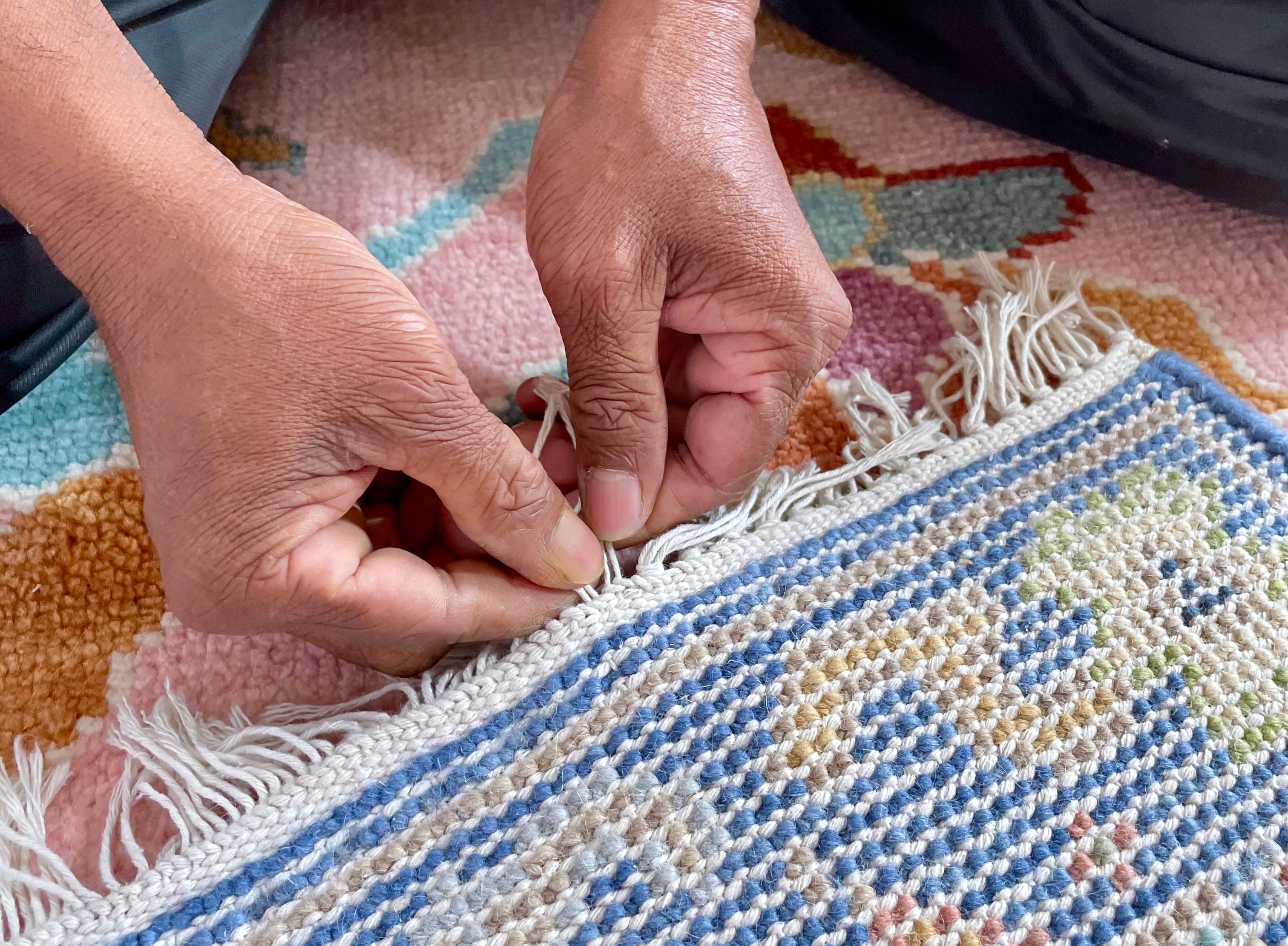"The making of a rug is a true collaborative effort, and each piece carries a lot of soul."
The creation process
"With every purchased rug, we support the CARE & FAIR initiative, which is dedicated to improving the quality of life for families involved in the rug-making industry."
Our visit on-site
The origin of the Oushak (Ushak) rug can be traced back to the Usak region, located south of Istanbul in Turkey.
During the time of the Ottoman Empire, this area became a significant center for the rug production.
The art of rug weaving flourished in this region and gained worldwide recognition. Oushak rugs are known for their unique designs, inspired by geometric movements. They are admired for their vibrant colors and extraordinary patterns, making them the perfect centerpiece for any room.
The crafting of an Oushak rug involves over ten steps, all of which are executed by hand. These include the creatin of the design, selecting a color scheme, spinning and dyeing the
wool, printing the design plate, weaving, washing, sun-drying, stretching, shearing, binding, and any necessary repairs.
The result is always a one-of-a-kind rug.


























